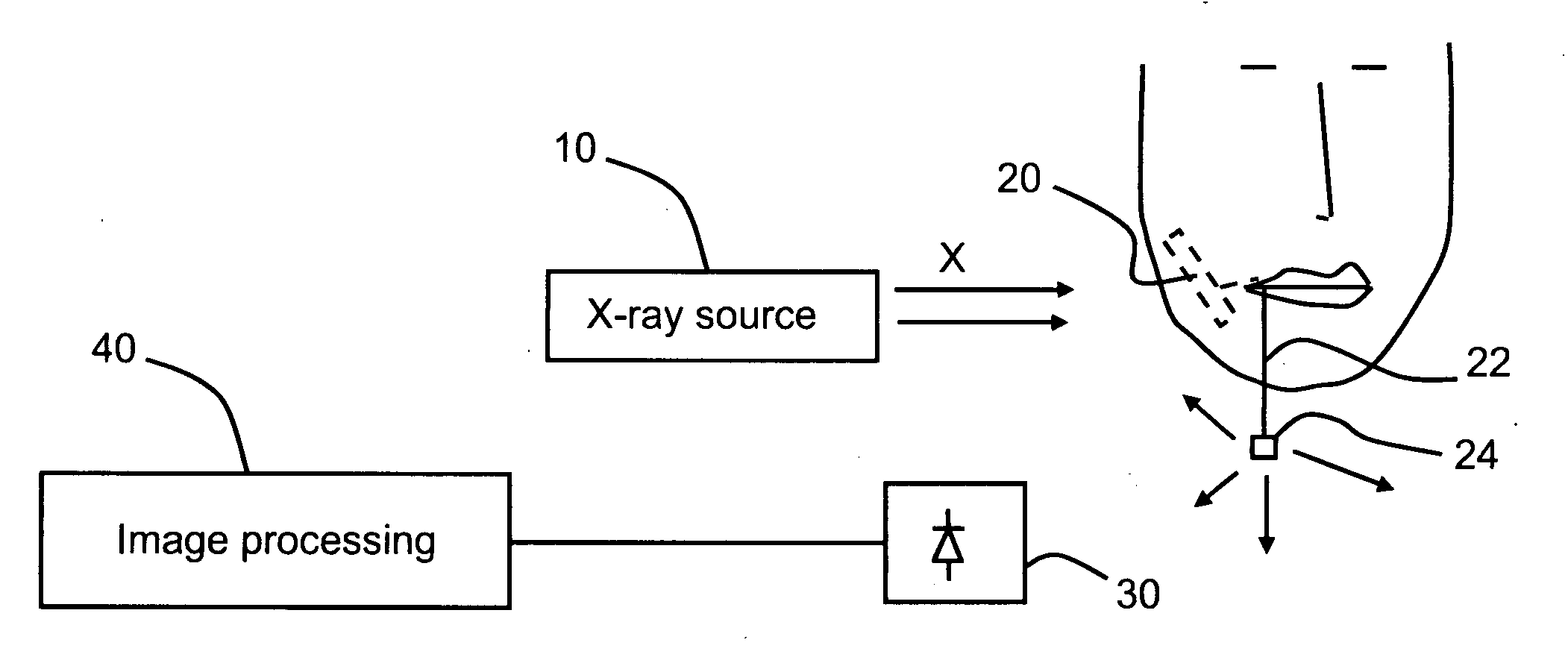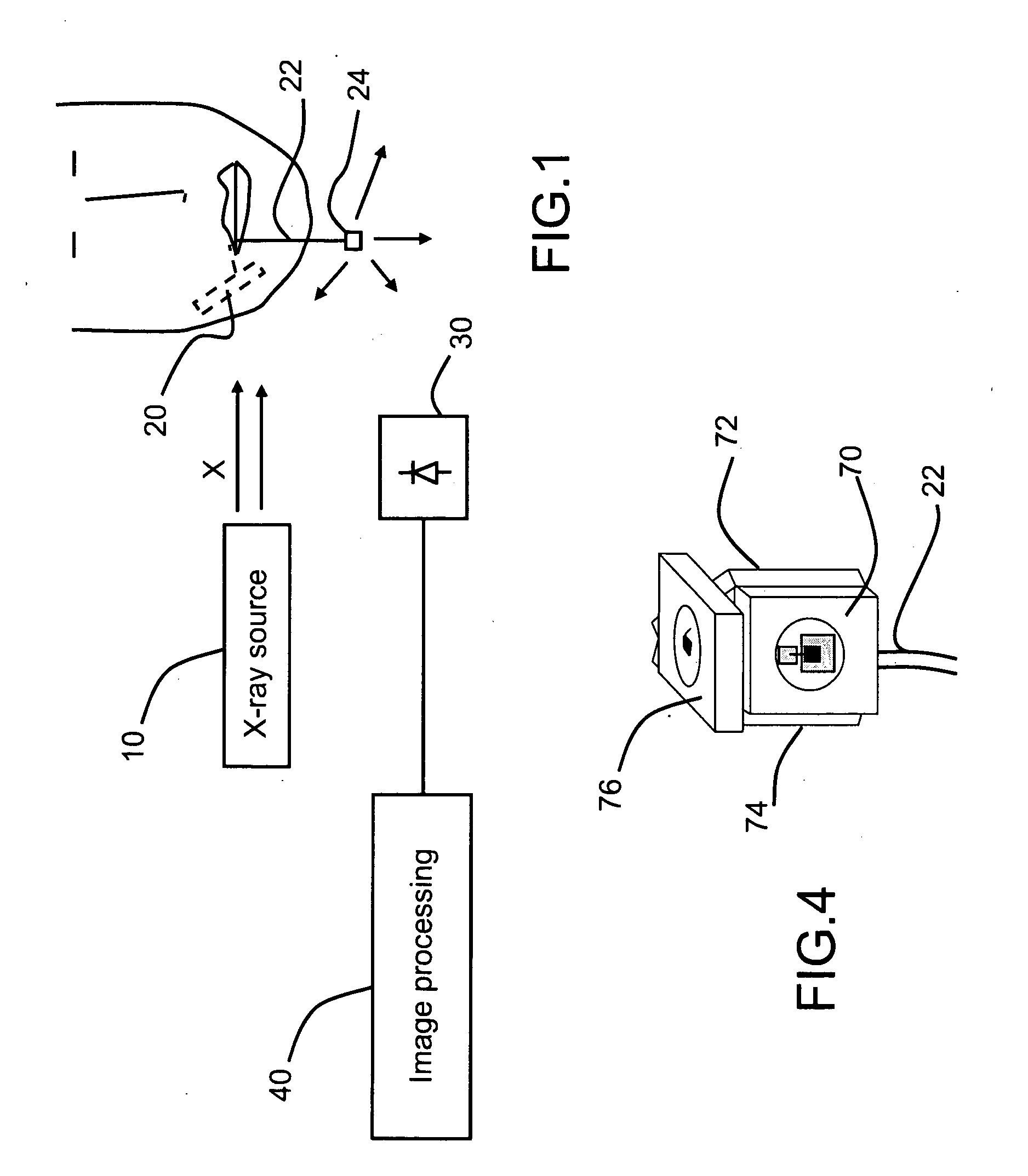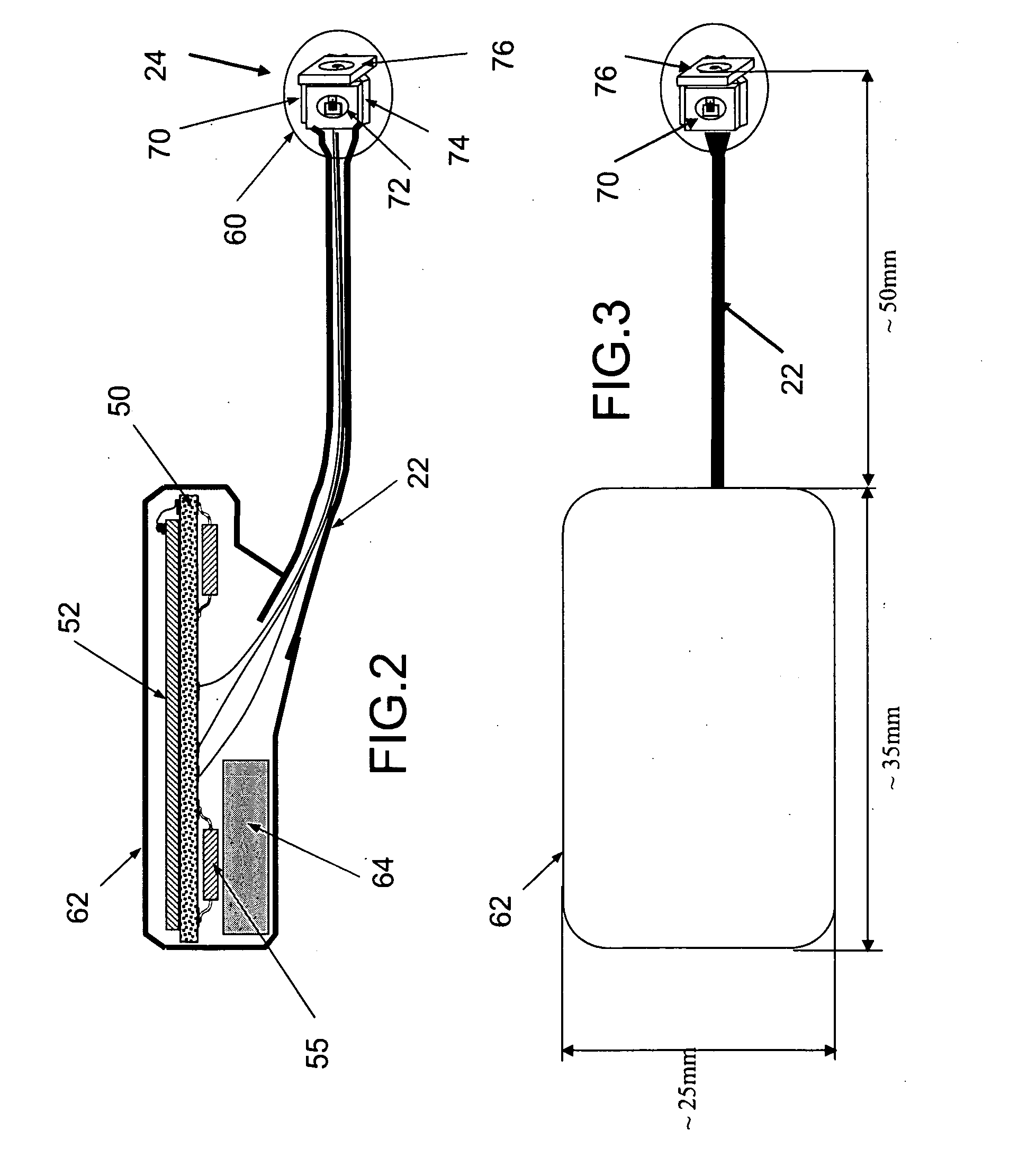Intra-oral dental-image sensor system with multiple leds
a dental image sensor and intraoral technology, applied in the field of dental radiological systems using intraoral image sensors, can solve the problems of inconvenient patient care, bulky overall installation, and risk of being pulled out, and achieve the effect of reducing the bulk and weight of the intraoral sensor and further enhancing the omnidirectional character of the emission
- Summary
- Abstract
- Description
- Claims
- Application Information
AI Technical Summary
Benefits of technology
Problems solved by technology
Method used
Image
Examples
Embodiment Construction
[0027]FIG. 1 shows the dental radiological system according to the invention in schematic form: it comprises an X-ray source 10 capable of emitting an X-ray flash toward the part of the jaw to be examined, a radiological image sensor 20 placed in the patient's mouth and shown in dotted lines, a photosensitive receiver 30 located outside the patient's mouth but not electrically connected to the sensor, and a system for using the signal received by the receiver. This user system 40 is designated in FIG. 1 as the image processing system, image processing being taken in the broad sense and possibly including, for example, receiving and demodulating digital light signals detected by the receiver, in order to extract from them image information which they are carrying and in order to transform the demodulated signals into an electronic image. This image is intended to be stored in a memory of the system or displayed on a display screen (not shown).
[0028]The core of the radiological image ...
PUM
 Login to View More
Login to View More Abstract
Description
Claims
Application Information
 Login to View More
Login to View More - R&D
- Intellectual Property
- Life Sciences
- Materials
- Tech Scout
- Unparalleled Data Quality
- Higher Quality Content
- 60% Fewer Hallucinations
Browse by: Latest US Patents, China's latest patents, Technical Efficacy Thesaurus, Application Domain, Technology Topic, Popular Technical Reports.
© 2025 PatSnap. All rights reserved.Legal|Privacy policy|Modern Slavery Act Transparency Statement|Sitemap|About US| Contact US: help@patsnap.com



